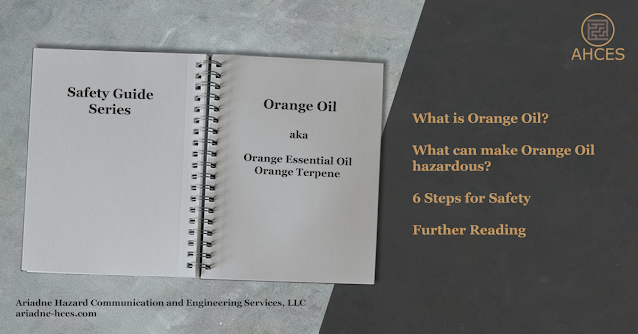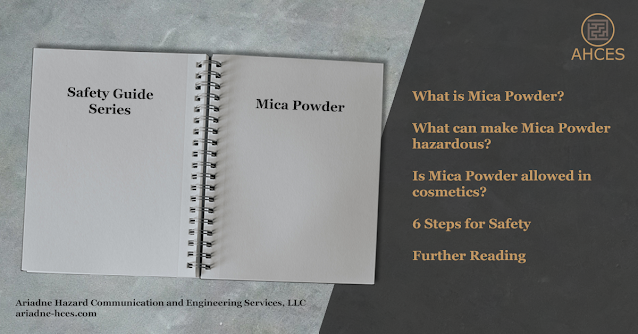Titanium Dioxide Safety Guide
What is Titanium Dioxide?
Titanium Dioxide is a naturally occurring inorganic compound. Titanium dioxide
can be found in a wide range of applications, including as a pigment for increasing brightness and opacity in paints, coating, plastics, cosmetics, and foods.
Titanium dioxide is also known by the mineral names anatase, brookite, and rutile. It is also known as titanium (IV) oxide, titanium peroxide, and by the pigment name titanium white.
The CAS Number is used to identify titanium dioxide as an ingredient on safety data sheets (SDS) and other safety documentation. When looking for titanium dioxide as an ingredient in pigments, colorants, and finishes, look for the CAS Number within the composition table.
Notable Properties of Titanium Dioxide
Titanium dioxide is naturally an odorless white solid, often found in a powdered form. It is UV resistant and considered inert, not readily reacting with oxidizers, acids, or bases. Any other color or odor comes from natural impurities or other ingredients within the pigment or product.
What Makes Titanium Dioxide Hazardous?
Titanium dioxide as a fine powder can be a respiratory
irritant. Additionally, there are also concerns about titanium dioxide causing
cancer. NIOSH reports
titanium dioxide as causing lung fibrosis and being a potential occupational
carcinogen. The International Agency for Research on Cancer (IARC) has classified titanium dioxide as a possible carcinogen to humans.
For United States regulatory purposes, the primary safety concern is repeated exposure to workers where titanium dioxide is being used as part of a manufacturing process.
Titanium Dioxide Frequently Asked Questions
Is Titanium Dioxide Allowed in Food?
In the United States, the FDA permits use of titanium dioxide. This includes as a food additive if ≤ 1.0
wt% of the food, within drugs such as sunscreen and topical ointments, within
cosmetics including products used around the eyes, and on orientation markings
for contact lenses.
As of 2021, food additive titanium dioxide (E171) is no longer considered safe for use in food by the European Food Safety Administration. This is due to concerns about titanium dioxide nanoparticles being a potential carcinogen.
Is Titanium Dioxide Safe?
The degree to which titanium dioxide is considered safe varies by regulatory region, as discussed above. In the United States, it is treated as a respiratory irritant and a potential occupational carcinogen, and is still permitted in food and cosmetics. In the European Union, it is treated as a respiratory irritant and a potential human carcinogen, and has been banned from food products.
It is important for individuals to make informed decisions about what they utilize in the workplace and at home. Safety guides such as this one, as well as information bulletins like the PubChem website, allow people to better understand the potential risks of using products containing a potentially hazardous chemical.
6 Steps for Safety
Step 1: Read the Warnings
When working with a product for the first time, always
read all the safety documents first. This includes safety data sheets, which
should be provided by the manufacturer or importer of the titanium dioxide powder.
There may also be an OSHA chemical label, FDA cosmetics label, or a Consumer
Protection label on the packaging of the titanium dioxide product. These
documents all contain important information on the hazards of the product and
instructions on how to mitigate those hazards.
Different compositions in different products may cause additional hazards to be present beyond the properties of plain titanium dioxide powder. Be sure to familiarize yourself with the differences between separate titanium dioxide powder products.
For example, a paint with titanium dioxide pigment may also contain tetramethyl decynediol, which is a surfactant used to prevent foaming or bubbling in the paint. Tetramethyl decynediol in high concentrations is corrosive and irritating to both the skin and eyes. As paint is a liquid, precautions need to be taken to prevent harmful liquid splashes, such as wearing gloves and protective goggles. Safety precautions taken for a liquid paint will be different than those taken for a solid powder.
Step 2: Prepare Your Workspace
Creating a safe workspace, sometimes referred to as
engineering control, is a key component of working safely with any potentially
hazardous substance.
Since the primary hazard of titanium dioxide powder is fine dust, particularly breathing it in, ventilation is important. Fans that would blow titanium dioxide powder around should be avoided. Dust collectors and air filters which draw in and capture any stray titanium dioxide powder are ideal.
Step 3: Gather Your PPE
For working with titanium dioxide powder, you will need
the following PPE.
·
Respiratory Protection
o A
dust mask or half-face respirator rated for the particle size of the titanium
dioxide powder you are working with will protect against respiratory
irritation.
Step 4: Clear Your Workspace
Having a clear workspace is an important part of maintaining a safe work environment.
Clutter can not cause accidents, such as posing a tripping hazard or blocking ventilation, it can also obscure spills.
Clearing and preparing the workspace is a good time to double check engineering controls. For titanium dioxide, this can include checking the status of filers in a dust collector.
If you are working in a shared space, make sure anyone around you can also remain safe when you are working with titanium dioxide powder. For those working at home, this can include family members and pets.
Step 5: Do The Work
Titanium dioxide powder is inert. If engineering controls
and PPE are used properly, working with titanium dioxide powder has minimal
hazards.
If work cannot be completed in one sitting, be sure to properly seal any titanium dioxide powder containers to prevent spills or accidental release when not in use.
Step 6: Clean Up
Dust generation should be avoided when cleaning up.
Either a vacuum with a filter or a damp cleaning cloth can be used to pick up
any spilled or stray titanium dioxide powder while preventing dust generation.
Be sure to dispose of any waste in accordance with local regulations.
Further Reading
The National Library of Medicine has a PubChem Titanium Dioxide Compound Summary and there is also an OSHA Chemical Data Bank Entry.
Check out the Safety Guide Series Hub for more safety guides.
Sources Cited
European Food Safety Authority (2021, May 6). Titanium dioxide: E171 no longer considered safe when used as a food additive. Efsa.Europa.eu. Retrieved March 22, 2023, from https://www.efsa.europa.eu/en/news/titanium-dioxide-e171-no-longer-considered-safe-when-used-food-additive
National Center for Biotechnology Information (2024). PubChem Compound Summary for CID 26042, Titanium Dioxide. Retrieved February 12, 2024 from https://pubchem.ncbi.nlm.nih.gov/compound/Titanium-Dioxide.
National Institute for Occupational Safety and Health (2019, October 30). Titanium dioxide. Cdc.gov. Retrieved March 22, 2023, from https://www.cdc.gov/niosh/npg/npgd0617.html
U.S. Occupational Safety and Health Administration (2021, January 13). Titanium Dioxide. Osha.gov. Retrieved March 22, 2023, from https://www.osha.gov/chemicaldata/246
Food & Drug Administration (2022, February 17). Color Additive Status List. Fda/gov. Retrieved March 22, 2023, from https://www.fda.gov/industry/color-additive-inventories/color-additive-status-list
Original Posting Date: Mar. 22, 2023
Last Updated: Feb. 29, 2024






Comments
Post a Comment